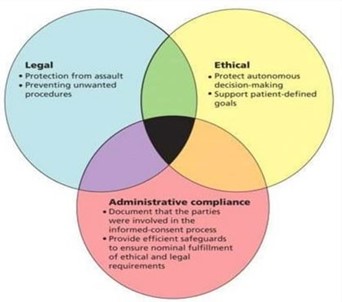During an interdisciplinary treatment team meeting, a short-term outcome is established for a client with depressive symptoms. Which SMART goal is most appropriate?
The client will make statements that he feels less depressed by the end of the first day of admission.
The client will express and demonstrate increases in energy by the third day of admission.
The client will reduce self-rating on the depression scale by 10% by the second day of admission.
The client will demonstrate increased interaction with other clients by discharge.
The Correct Answer is C
Explanation: SMART is an acronym for Specific, Measurable, Achievable, Relevant, and Time-bound. A SMART goal should be specific, clear, well-defined, measurable, attainable or achievable, relevant, and time-bound.
Option (a) is not specific, measurable, or achievable. It does not provide a clear target or timeline for the client's improvement, and it may not be attainable for some clients to feel less depressed after only one day of admission.
Option (b) is specific and measurable, but it may not be achievable or relevant for all clients. Increases in energy are not always a direct indicator of improved depressive symptoms.
Option (c) is specific, measurable, achievable, and relevant. A 10% reduction in the self-rating of the depression scale is a clear and well-defined goal that can be easily measured. It is also achievable and relevant as it directly addresses the client's depressive symptoms.
Option (d) is specific, measurable, achievable, and relevant. However, it is not time-bound, which means there is no clear timeline for the client's improvement. It is also not as direct or measurable as option (c).
Nursing Test Bank
Naxlex Comprehensive Predictor Exams
Related Questions
Correct Answer is B
Explanation
Informed consent is a process in which a healthcare provider explains the risks, benefits, and alternatives of a proposed treatment or procedure to a patient. The patient must be given enough information to make an informed decision about whether to proceed with the treatment or procedure. This includes information about the expected benefits of the treatment or procedure. It is important for patients to understand the potential benefits so that they can weigh them against the potential risks and make an informed decision

Correct Answer is C
Explanation
The client is exhibiting the defence mechanism of rationalization, which involves justifying or explaining one’s behavior or feelings in a seemingly logical manner to avoid the true explanation. In this case, the client is rationalizing their decision to drink while taking medication by blaming the nurse for not providing enough information, rather than taking responsibility for their own actions.
Whether you are a student looking to ace your exams or a practicing nurse seeking to enhance your expertise , our nursing education contents will empower you with the confidence and competence to make a difference in the lives of patients and become a respected leader in the healthcare field.
Visit Naxlex, invest in your future and unlock endless possibilities with our unparalleled nursing education contents today
Report Wrong Answer on the Current Question
Do you disagree with the answer? If yes, what is your expected answer? Explain.
Kindly be descriptive with the issue you are facing.
